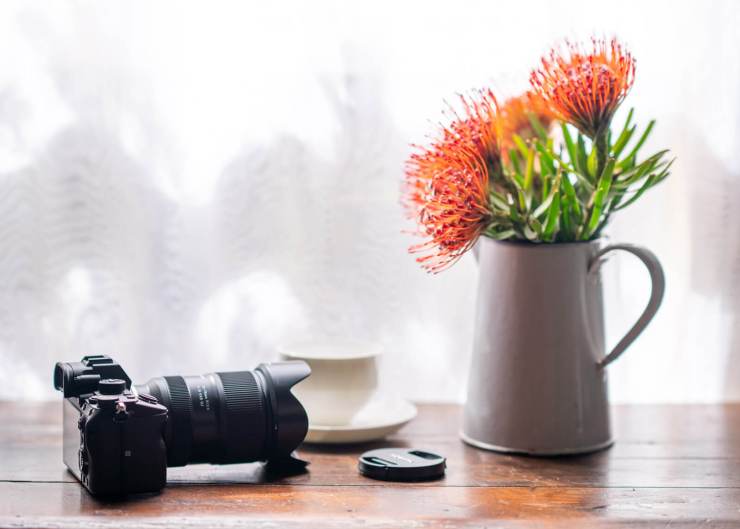Working with technology is not without its challenges, and photography is no different. Sometimes things go wrong and there is nothing you can do about it. So it does pay to be prepared for eventualities and have backups of just about everything on hand.
Expect the unexpected
Recently, I was in the studio with a client. We were having such a lovely morning, chatting through hair and makeup, while I set everything up in the studio. We had been shooting for about 30 minutes and suddenly I could not get the camera to tether to my laptop.
I turned the camera off, unplugged the tethering cable and turn the camera back on. Now I had no Live View and I could not access playback. I had a weird error message on every function saying that function was disabled. Fantastic! Right in the middle of the client portrait session.
Don’t panic
I thought that maybe my SD card was the issue, so I put in a spare SD card. But it made no difference. I turned the camera on and off, removed the battery and put it back in. Nothing. Did I panic? No. I simply grabbed my backup camera and told my client that everything was fine and that I was switching cameras and lenses to get some slightly different angles. Which was partially true, as I often shoot with two cameras and two different lenses.
I went back to tethering and finished the shoot. Did I have the first half of the session on the memory card? I wasn’t sure, but as I was tethered to Capture One, I still had the images on my laptop anyway.
Having backups is ALWAYS a great idea. The fact that I did not panic and acted like this was a perfectly normal morning, meaning the client had no real idea. Although she did make a small joke about “I told you my looks might break your camera,” we all laughed and moved on.
It’s not always what you expect
Internally I was silently screaming. These days I am not emotionally attached to my camera (not like my first DSLR, which I treated like a baby). But I have had some previous experience with a camera that completely malfunctioned and needed major repairs four times. So I was not really happy about having another camera die.
I figured a good old factory reset might do the trick. However, ALL functions on the camera were greyed out. NOTHING would work. So I turned to my local Sony Brains Trust group, described what had happened and asked the question — did anyone have any ideas?
Obviously, a few asked the run-of-the-mill which I had done to avail. Turn the camera on and off, and take the SD card and the battery in and out. Unplug the tethering cable. Try a factory reset, and reinstall the software, however when NONE of the camera’s functions work, the last two cannot be done.
Then someone asked if I had tried a different battery altogether. So I turned the camera off and took out the battery (which still had charge), left it for five minutes and put in a fresh battery. I crossed my fingers and turned the camera back on. Now it kept asking for the SD card to finish re-writing the last image. I had swapped out the memory card several times, as I had taken what images I did have from the memory and backed them up on my PC. But once I had located the correct card, the camera finished writing the image and VOILA! Everything was working again.
It’s not always you
It’s not always you or your camera that trip you up. Previously, any time I had an issue I used to think I had done something wrong (and sometimes I did). But I did go directly to a camera issue, while all along it was a battery.
Apparently, if your battery has degraded and not delivering enough current, this issue can happen. It was a first for me and the battery now won’t even charge. So off to buy a new backup battery!

The moral of this story
Firstly Don’t panic — that never helps. If you plan on being a super keen hobbyist through to a professional photographer, it pays to have backups on hand for everything. SD cards, batteries, lenses, speedlights and even a backup camera.
Remember — as much as you might love your gear, technology can and will fail, usually when you least expect it. So having the ability to grab a spare anything while keeping your cool will always save the day.
Tell your story with the second annual Visual Storytelling Conference!
Experience four days of interactive, online training sessions featuring a range of educational content with experienced photographers and content creators. This free event kicks off with a series of technical boot camps to build essential skills, followed by live, online sessions on photography, video, business and social media. Join live from March 10-13, 2022!
